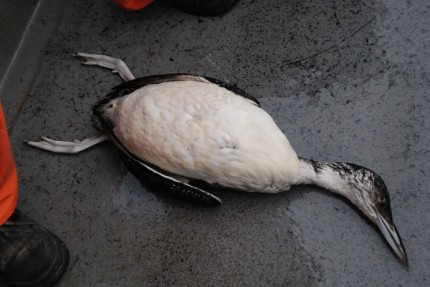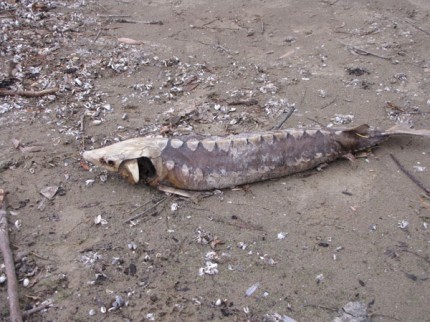
(Chelsea Update would like to than Rick Taylor for the information and photos in this story.)
The Common Loon, arguable one of the most beautiful birds that grace our Great Lakes, are dying at an alarming rate.
The fact that they’re dying is troubling, but the cause is downright scary.
The loon is about the size of a small goose and has black-and-white plumage with piercing red eyes and can be found throughout the Great Lakes and other northern waters. Not only is their beauty unmatched, nut also their eerie calls echo across waters they inhabit, which makes them one of the most unforgettable birds you’ll ever see. Or hear.
Recently, the Great Lakes Science Center (GLSC) – a division of the United States Geological Survey (USGS), has discovered that the Common Loon can dive down 150-feet to catch fish, and they’re doing so to eat fish and survive.
Loons only reside in the Great Lakes for a brief period in the late summer and fall on their way from their northern breeding lakes to their wintering grounds in the Gulf of Mexico and the Atlantic Ocean, but they feed heavily on highly concentrated schools of fish, which occur in the deeper waters of the Great Lakes.
Many of the fish they’re eating are Round Gobies — an invasive fish inadvertently brought from Europe in the ballast water of ships.
But it’s not the Goby that’s killing loons. The problem is Botulism E.
Dr. Kurt Newman with the GLSC stated the following: “Botulism E toxin is the most toxic substance known to man. One gram of purified toxin could kill hundreds of thousands of people.”
We have to go back in time to set the stage for this situation that affects us all. It started with the invasive Zebra Mussel and then the introduction of another invasive mussel called the Quagga Mussel.
Both mussel species have the ability to filter Great Lakes water at an alarmingly fast rate, in turn, clearing up the water. Most people would think clear water in the Great Lakes is a good thing. Unfortunately, that’s not the case.
The mussels are taking away food for tiny fish to eat; they’re upsetting the food chain making its way up to the predators including the sturgeon, salmon and trout species. (As an aside, the salmon and trout numbers are dwindling as well.)
The greater problem is the water, which is getting clearer and allows the sun to penetrate to the bottom of the Great Lakes, particularly Lake Michigan.
The sunlight reaching down over 50 feet is allowing algae mats to grow along the bottom of the lakes. Algae mats are growing very fast and they’re many feet thick. The top layer of algae is getting sunlight but the lower layers begin to decay, and large amounts of algae are sloughed off the algal beds, sometimes by storms.
This results in tons of algae being washed off and decomposing on the lake bottom, and that’s where the Botulism E bacteria grows and produces toxin.
The goby swims through these piles of decomposing algae and eats worms and bugs that have eaten the toxin from the rotting algae, and birds like the Common Loon and Cormorants dive down to eat the Goby and other deep swimming bait fish.
The gobies carrying the Botulism E toxin are now infecting the birds that eat them. Botulism E carries a neurotoxin that affects the central nervous system of the infected birds. This neurotoxin causes paralysis and the birds often drown because they can’t perform the simple task of keeping their head above water.
Scientists with the GLSC are working with the USGS National Wildlife Health Center and the National Park Service, and they have estimated that we’ve lost more than 100,000 birds and the numbers are expected to get worse until scientists find a way to intervene.
Birds have been dying all over the Great Lakes, but where and when they get the toxin, and where they wash up on the beach, is unpredictable.
It is estimated that around 3,000 loons died from botulism in Lake Michigan in 2012. This could have a significant effect on loon populations if it continues as there are only about 20,000 adult loons in the Great Lake States.
These scientists have also found that botulism outbreaks are more likely to occur when lake levels are low and water temperatures are high, which are the exact conditions, which are predicted because of climate change.
This is a relatively new problem but it affects us all. We’re dealing with a highly toxic substance that is increasing its territory in our Great Lakes.
In addition, it’s killing our diving birds, the majestic Lake Sturgeon and the deep-diving duck populations.
If you thought the Great Lakes were doing OK, then it’s time to reconsider.
I’ll stay on this story and give you updates.















Thanks for this grim bit of news, Rick. I wish the Chelsea Update would publish a by-line for items like this. Everyone should know Rick Taylor wrote it!
Please read the message in bold under the headline which thanks Rick Taylor for the photos and information in the story. Would you prefer this credit be presented in a different way? If so, how would you like to see credit be given?
Lisa Allmendinger
Publisher
Chelsea Update